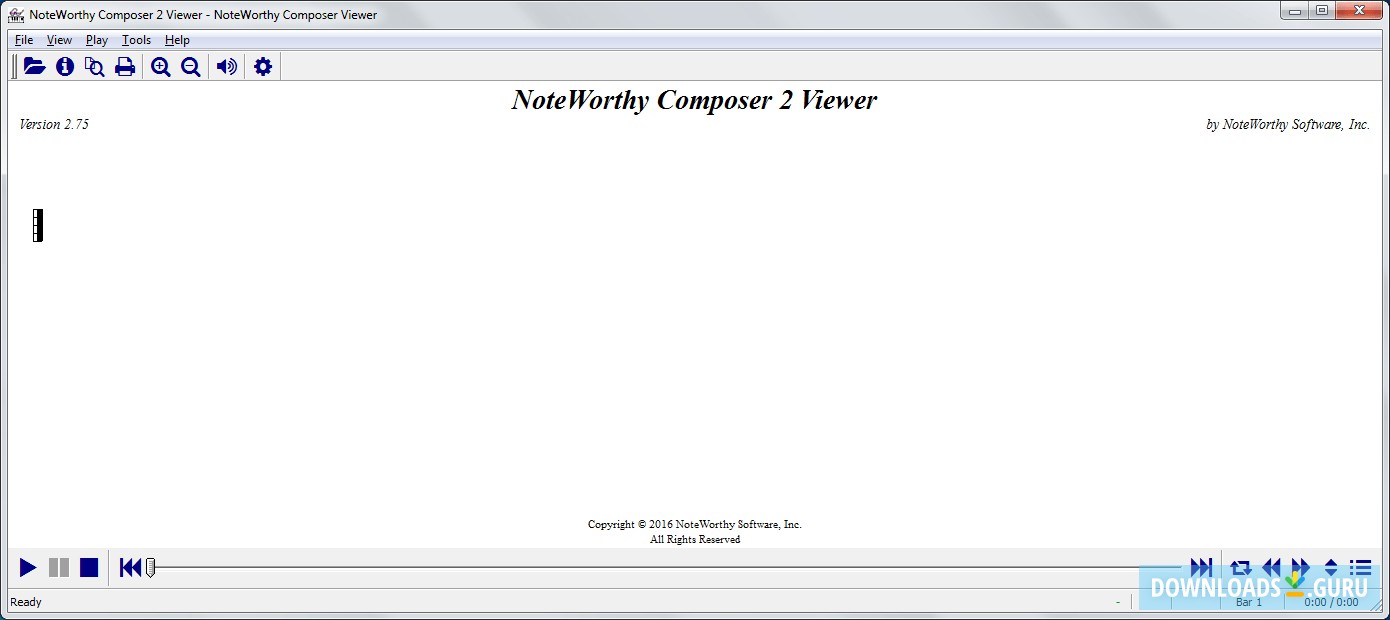

But then MidiSoft went out of business, so there were no more bug fixes. I really liked Studio a lot, despite its bugs. Back in those days, I had BiaB, and I used it for rhythm sections on a few tracks, but that was about the extent of its use.
#NOTEWORTHY COMPOSER FREE TRIAL PRO#
I used Cakewalk's Pro Audio 8 and later 9 to complete the projects. This was the product I used to get my thoughts down into the computer for my first two albums. Between the inherent instability of Win98 and Studio's bugs, I learned to save my work early and often. I was running Studio on Win98 back in those days and it was kinda buggy. It was my first introduction into a notation-based sequencer, and to me it was the equivalent of discovering a word processor after writing longhand all my life. I bought a copy of it back in 2000 - for about $60, as I recall. I've got a long history with this product. Wish I would have seen it before the expiry on Forte 10 Basic. For intonation, the most unforgiving interval is the unison mute all lines except your own to quickly find out if there are any notes you need to adjust.I just noticed this thread. If the music is a flute sonata in the key of D major but your sheet music is for recorder in the key of F major, the MIDI player can transpose the music up a minor third. If the music is at A415 but your instrument is tuned to A440, no problem! The MIDI player can transpose the music up a half-step.
#NOTEWORTHY COMPOSER FREE TRIAL HOW TO#
As in so many things in life, the fastest way to get there is by going slowly! (Here is the blog entry on How to change tempo in MuseScore) If you practice at too fast a tempo, what you will be ingraining in your muscle memory are the mistakes. More to the point, they can be played at a tempo I can manage! Once I can play all the notes correctly I then (and only then!) increase the tempo. Usually, there is no way I can play a new piece “up to tempo”, but MIDI files can be played at any tempo I desire. Additionally, you can print the score and/or parts from a MIDI file using any notation program (Finale, Sibelius, MuseScore, etc). You do not have to change anything when using a MIDI file but you can, and that is what makes a MIDI file such a powerful rehearsal tool. MIDI files, on the other hand, give you the freedom to easily change: With an audio file (MP3 or WAV, for example) the play-back is fixed you have no control over the tempo nor the key. MIDI files are the ideal medium for musicians, especially in these times of social distancing: they allow "music-minus-one" rehearsing, and it is easy to reconstitute the sheet music from a MIDI file using any music notation program (Finale, Sibelius, MuseScore, etc).

See the blog entry of for how to do this. The free program MuseScore is recommended for this purpose.

For some works I could not find the sheet music freely available, but you can always print the sheet music from the MIDI file using any music notation software. These links appear as boldface, underscored text. Links to the sheet music have been provided. MIDI files are a great aid for intonation training by muting all lines except my own.I can explore music I rarely get the opportunity to play, such as the 6-part literature, or concertos with me as the soloist!.I can practice pieces with the entire ensemble "present".In these days of social distancing however, their value as a rehearsal tool has become even more apparent. MIDI files have been my "secret weapon" for many years I can show up at the first rehearsal with a strong sense of how my part fits into the whole. MIDI files allow you to play along with all parts present, every note perfectly placed and perfectly in tune! I have found them to be an invaluable rehearsal aid and hope you will find them useful too. I have setup this website to share MIDI files of music written for Viola da Gambas and Recorders. 3 Trio Sonatas for two recorders - Georg Philipp Telemann.6 Duets for alto recorders, Op.2 - Gottfried Finger.24 Suites à 3, 4, 5 & 6 - John Hingeston.6 Trio Sonatas for recorder and oboe, Opus 1 & 2 - John Loeillet of London.6 Sonatas for 2 Recorders - Michel Blavet.The Flatt Consort, Sets 1 & 2 - Matthew Locke.Pavans, Galliards &Almains (1-65) - Anthony Holborne.(TWV 41:a6, e5, G6) - Georg Philipp Telemann The Song Called Trumpets à 6 - Robert Parsons.The Little Consort, Suites 6-10 - Matthew Locke.All files have been restored and renamed to include the composer name.11 3-part Airs in C Major - Charles Coleman.9 3-part Airs in D Minor - Charles Coleman.19 3-part Airs in F Major - Charles Coleman.Added links to the sheet music of the Johann Mattheson duets and trios.Added a link to an extensive collection of free flute sheet music.Added a link to a Catalogue of Solo and Chamber Music for Viola da Gamba.6 Babioles for two recorders - Jacques-Christophe Naudot.


 0 kommentar(er)
0 kommentar(er)
